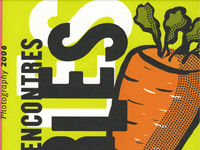
The imprint of war remains indelible even in the memories of those who were neither witnesses nor victims. Now thirty-eight, Paolo Ventura grew up surrounded by narratives and memories of the Italy of 1940-45 as recounted by his grandparents in the family house in Tuscany. His imaginary life was fuelled by these fragments of a larger history, by the haunting presence of death, treason, psychological distress and destruction. As a photographer he set about research into this troubled time, the surviving imagery of which provided only a much-abridged version of the reality. Faced with an obsessive jumble of material, he decided to create “true false” memories of the war meticulously prepared miniature scenes of which his photographs are the sole trace.
These tragic little bits of theatre are inexplicably troubling in the way their recreations – dead soldiers, night patrols and Resistance fighters on the run, all in poisonously corrupt context – succeed in conveying the somber enigma of everyday wartime. What we see are only figurines and doll’s costumes in cardboard settings, and yet we react with the same painful recognition as is triggered by Weegee’s crime scenes and their scrupulous rendering real-life events.
The accompanying text by novelist Francine Prose takes Paolo Ventura’s exploration further: “When we look at his images, time stops and we feel a breath of melancholy blow over us, we sense a whispering of the riddles of time and age, of the innocence of children and the wisdom of adults. But also the echo of mysterious questions: what are we seeing, what do we think we are seeing, what are these photographs telling us?”